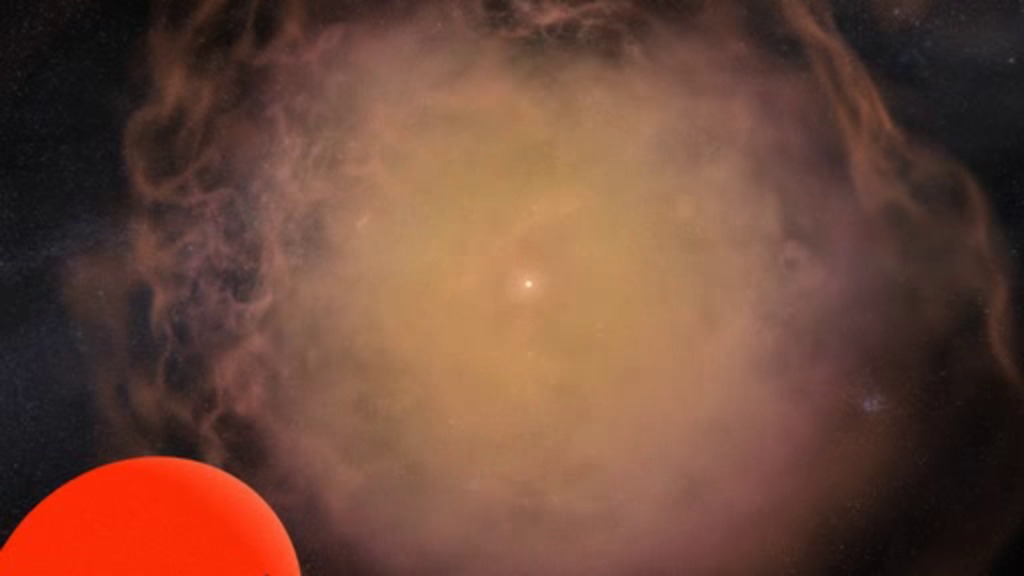NASA's Swift Images SN 2014J in M82
An exceptionally close stellar explosion discovered on Jan. 21 has become the focus of observatories around and above the globe, including several NASA spacecraft. The blast, designated SN 2014J, occurred in the galaxy M82 and lies only about 12 million light-years away. This makes it the nearest optical supernova in two decades and potentially the closest type Ia supernova to occur during the life of currently operating space missions.
As befits its moniker, Swift was the first to take a look. On Jan. 22, just a day after the explosion was discovered, Swift's Ultraviolet/Optical Telescope (UVOT) captured the supernova and its host galaxy.
A type Ia supernova represents the total destruction of a white dwarf star by one of two possible scenarios. In one, the white dwarf orbits a normal star, pulls a stream of matter from it, and gains mass until it reaches a critical threshold and explodes. In the other, the blast arises when two white dwarfs in a binary system eventually spiral inward and collide.
Either way, the explosion produces a superheated shell of plasma that expands outward into space at tens of millions of miles an hour. Short-lived radioactive elements formed during the blast keep the shell hot as it expands. The interplay between the shell's size, transparency and radioactive heating determines when the supernova reaches peak brightness. Astronomers expect SN 2014J to continue brightening into the first week of February, by which time it may be visible in binoculars.
M82, also known as the Cigar Galaxy, is located in the constellation Ursa Major and is a popular target for small telescopes. M82 is undergoing a powerful episode of star formation that makes it many times brighter than our own Milky Way galaxy and accounts for its unusual and photogenic appearance.

This Swift UVOT image shows M82 before the explosion and combines data acquired between 2007 and 2013. Mid-ultraviolet light is shown in blue, near-UV light in green, and visible light in red. The image is 17 arcminutes across, or slightly more than half the apparent diameter of a full moon.
Credit: NASA/Swift/P. Brown, TAMU

Swift's UVOT captured the new supernova (circled) in three exposures taken on Jan. 22, 2014. Mid-ultraviolet light is shown in blue, near-UV light in green, and visible light in red. Thick dust in M82 scatters much of the highest-energy light, which is why the supernova appears yellowish here. The image is 17 arcminutes across, or slightly more than half the apparent diameter of a full moon.
Credit: NASA/Swift/P. Brown, TAMU

Swift's UVOT captured the new supernova in three exposures taken on Jan. 22, 2014. Mid-ultraviolet light is shown in blue, near-UV light in green, and visible light in red. Thick dust in M82 scatters much of the highest-energy light, which is why the supernova appears yellowish here. The image is 17 arcminutes across, or slightly more than half the apparent diameter of a full moon.
Credit: NASA/Swift/P. Brown, TAMU

A wider view showing M82 before the explosion, from Swift UVOT data acquired between 2007 and 2013. Mid-ultraviolet light is shown in blue, near-UV light in green, and visible light in red. The image is 22.5 arcminutes across, or 75 percent of the apparent diameter of a full moon.
Credit: NASA/Swift/P. Brown, TAMU

A wider view showing M82 post-explosion in three Swift UVOT exposures taken on Jan. 22, 2014. Mid-ultraviolet light is shown in blue, near-UV light in green, and visible light in red. Thick dust in M82 scatters much of the highest-energy light, which is why the supernova appears yellowish here. The image is 22.5 arcminutes across, or 75 percent of the apparent diameter of a full moon.
Credit: NASA/Swift/P. Brown, TAMU
This animated GIF of Swift UVOT images shows M82 before and after the new supernova. The pre-explosion view combines data taken between 2007 and 2013. The view showing SN 2014J merges three exposures taken on Jan. 22, 2014. Mid-ultraviolet light is shown in blue, near-UV light in green, and visible light in red.
Credit: NASA/Swift/P. Brown, TAMU
Credits
Please give credit for this item to:
NASA's Goddard Space Flight Center. However, individual images should be credited as indicated above.
-
Producer
- Scott Wiessinger (USRA)
-
Writer
- Francis Reddy (Syneren Technologies)
Release date
This page was originally published on Friday, January 24, 2014.
This page was last updated on Wednesday, May 3, 2023 at 1:51 PM EDT.
